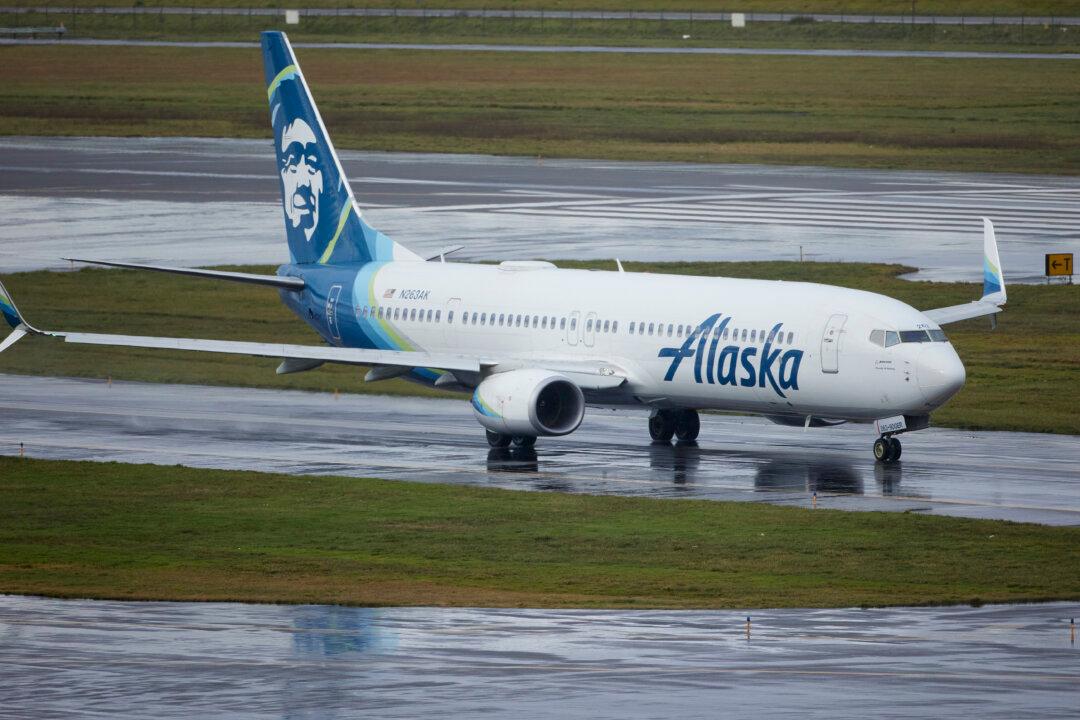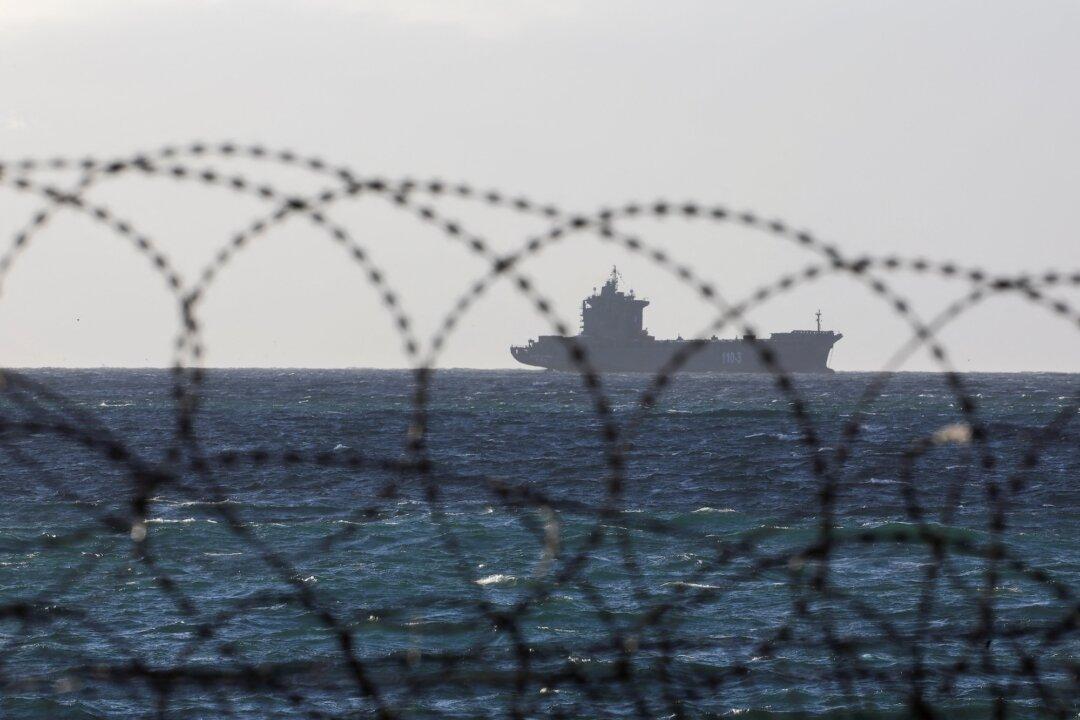Hundreds of flights were canceled after an Alaska Airlines Boeing 737 Max 9 aircraft experienced a midair incident involving the blowout of a door plug, prompting federal aviation authorities to order all Max 9 planes grounded for inspection.
An Alaska Airlines flight en route to California from Oregon made an emergency landing on Jan. 5 after the door plug—a panel covering an unused emergency door on the jetliner—blew out, leading to a gaping hole and rapid cabin decompression.





